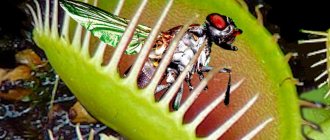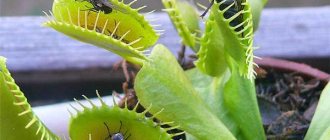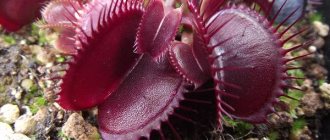The familiar ordinary pea has a wonderful counterpart - sweet peas, which are not only decorative, but also have a bright, pleasant smell. Many gardeners grow it precisely because of this. In our country, as a rule, an annual flower is grown, but it is also possible to grow a perennial plant. Usually winter sowing is done in the fall or spring directly into open ground, but some summer residents and gardeners practice growing sweet peas from seeds at home. This method allows you to see earlier flowering.
Description of the plant, photo
The plant has thin ribbed stems, a pair of leaves, and tendrils at their ends. Thanks to its antennae, it clings to a support and grows upward, towards the sun. Initially, you need to monitor, guide, and also tie up in time. Dwarf species of sweet pea are also known. Their height reaches 40 cm. Such plants can decorate any window or balcony of a city dweller. They can be planted along the edges of flower beds in suburban areas.
The flower of the plant is very beautiful; it has a very delicate inflorescence, thanks to which an ordinary garden plot becomes like a real piece of paradise. The flowers are collected in large clusters, the peduncles are long and leafless.
The flower has a corolla and five brightly colored moth-like petals. The upper petal of the flower is the largest, its diameter is up to 6 cm. It is called “sail”. The two lower petals resemble a “boat”, and the “oars” form the two middle petals. The flower remains beautiful and fresh for up to 5 days.
The fruit of a plant of the legume family, naturally, is a bean. Only a few round seeds ripen inside the fruit. When properly storing seeds, observing the permissible humidity and temperature conditions, their germination will last up to 8 years.
Seeds are not always formed after flowering. The reason for this is the sharp change in temperature, both at night and during the day. Despite the fact that the china is not afraid of cold weather, the buds react strongly to changes in day and night temperatures. The buds and flowers fall off, the ovary does not occur. In addition to a sudden change in temperature, the cause may be improper care of the flower.
There are many varieties of this plant known. They differ not only in the shape, size and color of the flower. You can choose the shade of the petals to your liking, thanks to the wide color palette. The plant is climbing, capable of entwining and thereby decorating any support with a real weightless carpet.
A delicate, refreshing aroma comes from the inflorescences of the plant. It fills the air not only in your suburban area, but also in nearby areas. In addition to the tall plant, there are dwarf varieties of sweet peas. The color of the flowers in each variety is different.
Caring for flowers in summer
First of all, it needs to be protected from drying out, waterlogging, sudden changes in temperature and strong ultraviolet rays. Having eliminated all these damaging factors, there is no doubt that the plant will not get sick and will bloom for a long time.
It is enough to follow a few rules:
- Water regularly with plenty of water and monitor soil moisture. Every week 1 m2 is watered with 30-35 liters of water. If the bushes are intended to collect seeds for the next season, they are watered less often.
- Weed the soil from time to time.
- Watch the support.
- Provide fertilizing. Without it, the condition of the bushes will not worsen, but it is preferable to carry it out. Fulfilling this point will not be superfluous. Feeding is carried out in 2 stages. Before flowering begins, it is fertilized with potassium sulfate. The second feeding occurs at the height of flowering. Apply Agricol or Rosa.
- Protect from pests.
The bushes themselves can cling to the underlying ledges, so in order for it to grow upwards calmly, it is planted next to fences, gazebos and terraces. Supports are also installed next to the plants if they are required.
It cannot be pruned. Only one procedure is carried out - cutting off wilted flowers.
Benefits of growing sweet peas
Among summer residents, sweet peas are very popular. It has a lot of undeniable advantages, among which unpretentiousness stands out. Despite this, experienced gardeners give a number of tips that will help novice gardeners grow such a wonderful plant as sweet peas.
It is planted on balconies or loggias for landscaping purposes. A box with soil is suitable for planting; you should always remember to water the plant. Sweet peas, with their delicate flowers, will decorate any home of a city dweller: be it a balcony, loggia or window sill. And for the summer resident it will become the tallest, most beautiful flower on the site. The aroma of its flowers can cheer up not only you and your family, but also your guests and beloved neighbors.
Know! Anyone can grow sweet peas.
The benefits of sweet pea include:
- The height of the plant, thanks to which you can make a decorative screen in any garden plot that exudes a wonderful aroma.
- Sweet peas climb well, they will decorate a nondescript wall of any building on the site, or serve as a weightless fence or partition. A comfortable, diffused shadow is obtained thanks to its weaving - this is very important on a hot and sunny day.
- Unpretentiousness - grows not only in the shade, but also in the scorching sun. Able to withstand frost down to -5ºС.
- Low-growing varieties do not need additional support.
- High growth rate (when compared with perennial vines).
- For an annual plant, the flowering period, it should be noted, is long, almost three months.
- Possibility to grow it on the balcony of a city apartment or on a country plot. The southeast side will be favorable.
- If you make a bouquet of pea flowers, it will look great and stay fresh for a long time.
Kinds
The variety of sweet pea species includes about a thousand plants. All varieties are divided into 10 large groups.
The most common ones include:
- Duplex. It is characterized by the presence of powerful shoots and large inflorescences, which include about 5 large petals. It is considered one of the best varieties of peas.
- Cream. It has a bush of almost a meter in height with cream-colored petals and large diameter.
- Galaxy. This species is a late-flowering variety, which is excellent for cutting or landscaping. It has a bush height exceeding 0.2 meters, and flowers in the transverse direction can reach as much as 50 mm.
Also, I would like to mention several groups of sweet peas that have become widespread throughout the world:
Royal Family
This plant variety first became known in 1964. The group included varieties that are most resistant to hot climates. Considered an improved version of the Cuthbertson-Floribunda variety.
Has the following characteristics:
- inflorescence length - 0.3 meters;
- large flowers of different colors, depending on the specific species.
One of the disadvantages of Royal Family is its excessive sensitivity to daylight hours, which precludes their cultivation in winter. Plants of this variety are excellent for cutting and landscaping.
Multiflora Gigantea
This group includes varieties characterized by early flowering. America is considered its homeland, where tall bushes were first discovered, reaching a length of 2.5 meters and having powerful inflorescences.
Rufled
Includes plants equipped with strong stems. One inflorescence contains up to 10 large flowers. The plant of this variety is equipped with powerful and long peduncles. The sail has a wavy shape. The best varieties in this group are considered “Grace” and “Ramona”.
Intergen
This group contains low-growing, early-flowering varieties. The time of appearance is 1911, and the “founding fathers” are Russian breeders. All plants of this variety are characterized by low height and small size.
Under what conditions does sweet pea grow?
Sweet peas are very popular, they are known and grown in different climatic zones. The plant prefers open, windless places where the soil is moist and drained.
You need to carefully monitor watering, avoid drying out and waterlogging. Clay soil and waterlogging can cause disease and then death of the flower. Dry soil is unable to provide moisture to the root system.
Without moisture, the plant may dry out. Peas also do not like temperature changes. He warns about this by dropping buds and petals. This period is disastrous for him.
Sweet peas need to be planted in previously prepared soil, where their root system will develop normally. The soil should have neutral acidity. To reduce the acidity of the soil, liming will need to be done in advance.
It’s not difficult to prepare the soil yourself, the main thing is not to forget to add compost, potassium and phosphorus fertilizer. Compost must be placed in the soil to a depth of 15-30 cm, but this is by no means manure.
It is important to remember that fresh organic fertilizers can destroy the plant!
If the soil is being prepared for planting seeds for seedlings, then it should remain in the room where the seedlings will grow for some time. The earth just needs to warm up to room temperature. Then it is specially prepared, and then the seeds are sown.
Soil for seedlings
After the seeds have gone through all the necessary preparation measures, it’s time for the soil to grow. In order to prepare suitable soil, you will need a mixture of peat, earth and sand.
The ingredients must be mixed in the following proportions:
- 2 kg of soil requires 1 kg of peat and about half a kilogram of sand;
- After thorough mixing, the soil must be distributed into previously prepared containers specially designed for this purpose.
If you don’t want to prepare the mixture or the necessary components yourself, you can purchase a ready-made mixture for planting.
Timing of sowing seeds
Before planting this plant, you need to carefully familiarize yourself with the conditions that will be optimal for its growth. If you decide, then there is no need to delay planting the plant, since its growing season is generally only three months. The sooner you plant an annual, the sooner it will delight you with its flowering.
For each climate zone, planting of this plant occurs at different times. If it is recommended to plant sweet peas in the spring in your climate zone, then the soil must be heated to a sufficient depth. Otherwise, the seeds will simply freeze. You can prepare for this process in advance and grow seedlings.
Important! Plant only in warm soil. If the winter is very harsh and protracted, then it is recommended to plant sweet peas in a greenhouse or any other enclosed space.
City dwellers manage to do this in an apartment or on a balcony. The main condition is compliance with the temperature regime, which will be favorable for the flower.
If the climate is moderate, they begin to think about planting at the end of April, beginning of May. We are talking about planting seeds in open ground. The soil has warmed up, which means the seeds should not freeze. Thanks to warmth and precipitation, seeds germinate quickly. Soon the tree begins to bloom.
How to plant seedlings?
The best way to plant sweet peas is to use seedlings. Seating time plays a significant role. When choosing this factor, you should take into account the climatic characteristics of the region in which the plant is cultivated.
If the soil does not freeze, the seeds can be planted directly into the ground. In harsh winters, it is important to use the seedling method, since extreme cold can have a detrimental effect on young shoots. An important role in the timing and time of planting is played by the fragrant variety.
How to prepare seeds for planting
As you know, seeds have a fairly hard shell. Experienced gardeners easily discover the secrets of preparing seeds for planting. Seeds that do not “hatch” after soaking must be further processed. To do this, you will need a whole set of tools: a small knife or manicure scissors, an awl or needle and sandpaper.
Using sandpaper, the seeds are rubbed or, with a little effort, rolled over the paper. This action will make the shell a little thinner and softer. Using nail scissors or a knife, each seed needs to be cut, and you can pierce it with a needle or awl. The presence of a hard shell on pea seeds is not a reason to refuse to plant this plant on your site.
If you bought grayish-brown or brown pea seeds, you need to soak them before planting. Seeds that are light cream in color can be dispensed with without soaking. They are planted in the ground dry. Don't mix anything up.
It is not recommended to combine seeds of different varieties. They are placed in different containers and filled with warm or hot water for about a day. Seeds that float can be safely thrown away, as they are empty and will not sprout.
The container with seeds should be temporarily removed in a warm place where it is dark. After a day, the water is drained and the seeds are covered with a damp cloth. You need to ensure that the fabric does not dry out. Instead of fabric for seeds, sawdust or moistened sand is suitable. If you observe the temperature regime, you will see seedlings within one to two weeks. Sprouted seeds should be planted immediately.
Important! Do not let the seeds dry out - moisten the soil in time.
Preparing seeds before planting
Pea seeds must be carefully prepared before planting.
Preparatory measures are as follows:
- the seeds are soaked in hot water, in which they are left throughout the night;
- subsequently, those seeds that have swollen should be used. Those that have surfaced are recommended to be thrown away;
- An alternative to soaking is to trim small parts of the seeds. To do this, it is important to use only sharp nail clippers or a stationery knife.
Planting and growing annuals
To get a sweet pea plant, you need to buy seeds - it reproduces only by seeds. It can be grown both from seeds and from seedlings. Each method has its own advantages.
Sweet peas can be planted in open ground only after the snow has melted and the ground has warmed up sufficiently. Holes are made on a selected plot of land, 2-3 cm deep, at a distance of 10-20 cm. 2-3 peas are placed in each hole, the hole is covered with earth, and regularly watered abundantly. Abundant watering is very important for future flowers and for the development of their root system.
Important! Be sure to properly prepare your sweet pea seeds before planting.
To grow china seedlings, you need to prepare a soil mixture. It is used to fill deep narrow containers, which can be used as plastic cups or peat pots. A depression is made in the container, 2-3 “seeds” are placed in it, covered with earth and, as in the previous case, watered abundantly for two whole weeks. Do not bury the seeds deeply - you will have to wait a long time for germination.
The temperature for growing seedlings should be at least 15 degrees. In sunny weather, the seedlings are taken out to a closed balcony in the sun for hardening. As the air outside warms up, the balcony is opened.
The time the seedlings spend in the air increases every day. It is necessary to fertilize the plant a couple of times to stimulate growth. After some time, if the seedlings grow in plastic cups, it will be noticeable how the root of the sweet peas tightly entwines the ground.
When the future seedlings “throw out” a couple of leaves, the growing point is pinched. Do the same with the side shoots, then add fertilizer. This is done so that the flower grows its root mass, and the plant itself becomes like a bush. Thanks to its strong root system, the flower can grow tall and neither fall nor break if tied up.
Sweet pea seedlings should be planted in open ground at the end of May. The day before planting seedlings, it is better not to water them. This way it can be painlessly pulled out of the cup and replanted on the ground without damaging the root.
Rules for growing perennial plants
The seeds of perennial sweet peas, the photo of which is presented below, germinate slowly and for a very long time. There are 2 types of chin - broad-leaved and large-flowered, which can be planted in a private area and admire this climbing plant for a long time. Broadleaf has a large mass of leaves and is used in agriculture as a fodder crop. She has faded dirty pink flowers and they have no scent. The large-flowered chin belongs to the decorative climbing plants; it blooms profusely with large flowers of pastel colors without a smell.
To obtain perennial seedlings, the seeds are soaked in early February and sown in light nutrient soil under a film to create a greenhouse effect and prevent the soil from drying out. After the emergence of full shoots, the film is removed and the plants are fed with nitrogen for active growth. To do this, take 1 g of saltpeter per liter of water and quickly shed the soil so as not to burn the roots. After the formation of 2-3 true leaves, the plant begins to harden and after the end of frost it is planted in the ground. Such early planting allows the bush to get stronger in the first year of its life over the summer and strengthen the root system. During the first season, a poorly growing plant can be watered with a nitrogen solution at the rate of 1 s. l. for 10 liters of water.
https://youtube.com/watch?v=EiarillLMh1c
Perennial sweet peas, which can be planted on the south or west side of a building, love bright light and a lot of moisture. The chosen place can be slightly shaded, then the vines will grow more actively to reach a place actively illuminated by the sun.
The lashes need good support, so a special wall is created for the bed from any kind of mesh materials so that the lashes of the plant do not wrinkle or rot.
Grilles of open gazebos, pergolas, verandas and other temporary buildings located on the site are suitable as supports. Everything that you want to hide from prying eyes in the summer and decorate with light flowers can be hidden under the rank of a perennial.
You should not expect wild flowering in the first year of life from a perennial plant. First, a small bush grows from a pea, and it can be transplanted to a permanent place at the end of summer or next spring. The plant overwinters well, and, gradually increasing its root system, every year it grows flowering vines in the summer.
In order for the plant to comfortably overwinter, its vines are cut off at the root, and the growing area is covered with sawdust or covered with corrugated cardboard. These two types of shelter will prevent the ground from thawing during short-term winter thaws.
The perennial differs from annual sweet pea varieties in that its flowers have no aroma and the color of their petals is paler. A mature bush looks very beautiful and blooms from mid-June until the first frost.
Planting in open ground and care
Areas that are protected from the wind are suitable for planting sweet peas. Having planted seedlings in open ground, for the first two to three days they need to be covered with something from direct sunlight, and artificial shade must be made.
This period is very important for seedlings - they must “get over the disease”, their growth stops. But if everything is done correctly, then within a week the annual will come to life, new, more powerful shoots will appear on it. The root system will have the opportunity for further growth and strengthening in open ground.
A flower that is planted in open ground needs regular weeding and abundant watering. Weeding needs to be done to rid it of its neighbors - weeds. After rain, weeding is necessary to prevent the formation of a “crust” of dry soil, which prevents oxygen from entering the soil.
It is necessary to prepare in advance the supports on which the climbing plant will rest. You can use a net or string as a support. The shoots of the flower, as they grow, need to be oriented in the right direction, and do not forget to tie them up.
During the growth process, the plant will need a nutrient substrate as a supplement. It is added after hilling sweet peas to stimulate the development of adventitious shoots.
In order for sweet peas to bloom for a long time and please the eye in your garden, you need to do the following: pruning, and also removing faded twigs and dry leaves. If you don’t do this, flowering will end in a month.
To obtain seeds, you need to leave a few pods on each annual bush. In order for the seeds to fully ripen, there must be enough sunlight and heat. The area where the flower grows must be protected from drafts.
Attention! If you want to get seeds, create the conditions.
Don't forget about proper watering. If a flower is flooded, it can be affected by various diseases, including root rot. Garden pests may also appear: snails, slugs. This cannot be allowed to happen. It is very difficult to fight them.
If you properly care for sweet peas and follow all the recommendations, the plant will certainly delight you and your guests with its flowering all summer long.
Use in genetics
Gregor Johann Mendel is now considered the "father of modern genetics" due to his work on legume plant breeding (pea Pisum sativum
) with different properties, and sweet peas were used in the same way. The sweet pea is thus a model organism used in the early stages of genetic development, especially by genetics pioneer Reginald Punette. It is a very suitable plant as a genetic target because of its ability to self-pollinate and easily observable Mendelian traits such as color, height and petal shape. Many genetic principles have been discovered or confirmed using sweet peas. This was used by Punette in early studies of linked inheritance. An additional factor of inheritance was also confirmed in sweet peas when two white pure varieties were crossed to give rise to a blue hybrid, blue in color, requiring two genes derived independently from the two white ancestors. Like the blue rose, the yellow sweet pea remains elusive and unlikely without the use of genetic engineering.
Soil, fertilizing
Sweet peas grow well in fertile soil that is not supplemented with fresh organic fertilizers. In order for the plant to feel great on the balcony, it needs to be planted in deeper containers. And everything is done to ensure that the growing root system develops correctly.
Poorly fertilized soil negatively affects the flowering of annuals. If the soil is fertilized above the norm, then an increase in green mass occurs. Flowering occurs later than always, the number of flowers is small. There are practically no seeds.
The plant needs to be fed and watered regularly. As a top dressing, it is recommended to use mineral fertilizers that have a low nitrogen content.
Seedlings planted on the ground receive their first feeding after a week. To do this, you will need a bucket of water with urea and nitrophoska dissolved in it. One tablespoon of urea and nitrophoska per bucket of water is enough. The flower will need a second feeding when it begins to bloom. The third feeding is during the period of vigorous flowering.
Know! Thanks to feeding, the annual will delight you with its blooms all summer long.
Most leguminous plants have a beneficial effect on soil fertility. These include the fragrant china. In the process of decomposition of the remains of the root system, the soil is enriched with nitrogen. Thus, the plant is able to provide itself with nitrogen. It is not recommended to plant sweet peas in one place for more than two years in a row. Experts say that it will not bloom beautifully.
Collection and storage
Collecting sweet pea seeds involves avoiding trimming a few flowering pods. Drying of the pods can be determined by their acquisition of a yellowish tint.
Then it becomes possible to collect flowers for their further use. At this stage you need to be extremely careful, since overexposure of the beans can lead to a brown color change and increased fragility. Then even the slightest touch can cause it to crumble.
The collected seeds must be placed in a bag made of fabric, and then placed in a dark place to dry. You can also dry the seeds by pouring them onto a dry surface in a dark place. Subsequently, the flowering life of the seeds can reach six years.
Useful tips
Sweet pea is not a capricious plant, this is not difficult to understand. It is necessary to create optimal conditions, taking into account some features.
- Planting peas using seeds is much easier than planting seedlings. Seedlings are capricious; they need time to “get over it.” The plant has a good root system that goes very deep into the soil.
- Replanting it without damaging the root system is almost impossible. The plant grows quickly, and it is possible that its stems may be damaged or broken during replanting. If you decide to plant sweet peas as seedlings in open soil, then you need to replant them together with an earthen pot.
- Peas have a dense seed coat, which causes uneven germination. Professionals, trying to speed up the process, came up with little tricks: the seeds are pre-soaked, rubbed with sandpaper, and cut.
- Fast growth. To weave it in a timely manner, you need to install the mesh or supports in time. It is recommended to tie the plant during growth.
- The root system of sweet peas is well developed and goes deep into the soil. Therefore, watering should be abundant and regular.
Possible diseases and how to combat them
Unfortunately, sweet peas are susceptible to several diseases, so you should take action when the first symptoms appear.
- Ascochytaosis. Clearly defined brownish spots begin to appear on the surface of the plant. The bush should be treated with Rogor solution several times at intervals of 2-3 weeks.
- Viral mosaic. A pattern appears on the surface of the leaves, and the top of the stem becomes twisted and deformed. This disease is incurable, so the bushes are dug up and burned.
When the first symptoms of the disease appear, measures should be taken
- Root rot. The root collar darkens and the plant dies. Affected bushes are immediately removed and the soil is disinfected.
- Fusarium. The leaves of affected flowers turn yellow and wither. This disease is considered incurable, so diseased specimens are immediately removed, and the soil and nearby plants are treated for prevention using a TMDT solution.
- Powdery mildew and peronosporosis (downy mildew). A whitish coating of a loose structure appears on the surface of the leaves and stems. If left untreated, the leaves turn yellow and fall off. Treatment with colloidal sulfur will help in the fight against diseases.
The formula for successfully growing sweet peas is quite simple: they should be regularly and abundantly watered, weeded and fed. And it will delight you with its long flowering and delicate aroma all summer long.
China fragrant and traditional medicine
The healing properties of the annual plant have not been fully studied. Traditional medicine has been using it for a long time. It strengthens the immune system, helps with colds and vitamin deficiency. For insomnia, diseases of the cardiovascular system and gastrointestinal tract, a decoction of pea tubers is prepared. Tincture of the plant treats respiratory tract disease. It has a good expectorant effect.
Conclusion
Sweet peas are an easy to care for and beautiful plant. It is very popular among experienced gardeners. An annual flower, not capricious. Anyone can grow it, despite the number of recommendations. The beauty and tenderness of flowers, a pleasant aroma will lift your spirits and relieve any pain. You will definitely like the sweet pea plant!
How to deal with powdery mildew
Those who are interested in sweet peas and their care should familiarize themselves with the diseases of this plant, as well as ways to combat them. Powdery mildew appears on the leaves of young plants in the form of a whitish-gray coating, which over time turns gray-brown. There are several folk remedies to combat powdery mildew:
- Dissolve five grams of laundry soap and baking soda in one liter of water. Treat the infected areas with this solution twice, with an interval of six days.
- Add 0.5 cups of wood ash to boiling water. After two days, add a prepared solution of five grams of laundry soap and a small amount of water to this mixture, mix the solution thoroughly before using. If the plant is severely damaged by powdery mildew, then it should be treated several times, with a break of five to six days.
- A simpler and quite effective method is the use of various weeds. To do this, fill half a bucket with various finely chopped weeds and pour hot water over them. The prepared mixture should be in the fermentation process for several days, after which it should be filtered through cheesecloth or other filter material. Treat affected sweet pea plants in the evening.











